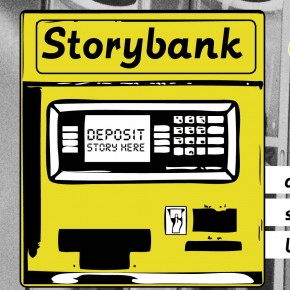 How do you interest newspaper readers in a story about federal regulation of the cosmetics industry? With a story about an 11 year old girl who lost her hair—you use the power of storytelling
How do you interest newspaper readers in a story about federal regulation of the cosmetics industry? With a story about an 11 year old girl who lost her hair—you use the power of storytelling
The New York Times published this story, featuring a photo of 11-year-old Eliana Lawrence whose hair fell out two years ago after using a new brand of shampoo. The story featured a classic plot—the fight between good and evil. Without Eliana’s story, the article might have appeared in a Capitol Hill newsletter, but almost certainly wouldn’t have made it in the New York Times.
Stories humanize complex issues, making them something we care about. They highlight impact and show why small changes matter. They bring life to dry data points and give audiences a reason to care.
That’s why your organization needs a story bank. A story bank is a vault of stories that illustrate your impact and bring it to life. You can pull them out to make a point, share with donors, or pitch the media.
Start your own story bank by interviewing your clients, grantees, donors or partners. You can also collect them online via Facebook, YouTube or your own website. It’s a great way to begin an interactive conversation with your constituents.
Here’s how to get started:
Understand what makes a good story.
A story is compelling emotionally. It has interesting characters that change, and grow during the course of the story. A story has a plot with a beginning, middle and end.
Identify the kinds of stories you want.
Create stories that show your impact and reinforce your core messages. Consider stories about people you serve or work with, challenges you have overcome, or ways you have affected change and advanced your mission.
Decide how you will track and store your stories.
First, choose your technology. You will want to be able to sort your stories by keyword, track contact information for your sources, and identify the format of each one. For small organizations, a simple spreadsheet can work well. Salesforce also has a storybanking plug-in that has gotten good reviews. Some organizations develop their own content management systems.
Next, decide how to organize your stories. What keywords will you use? Who are your spokespeople? Do you need to sort by geography, age of storyteller, audience? Identifying all of these factors upfront will make it easer to cover all of your bases.
Develop your interview protocols.
Open ended questions to encourage storytelling. Try some of these:
- What attracted you to this organization?
- What barriers did you face?
- How did you overcome these barriers?
- How has this changed your life?
- What do you want people to know about your story?
Make your stories accessible.
Stories are useless if you hide them like money in a mattress. Make it easy for people to use your stories. Train staff and board members to use them effectively. Share them on social media. Add a story spotlight to your website. Incorporate them into speeches. Be creative and have fun.
Want to know more about starting a story bank? Email me to set up a time to talk


Recent Comments